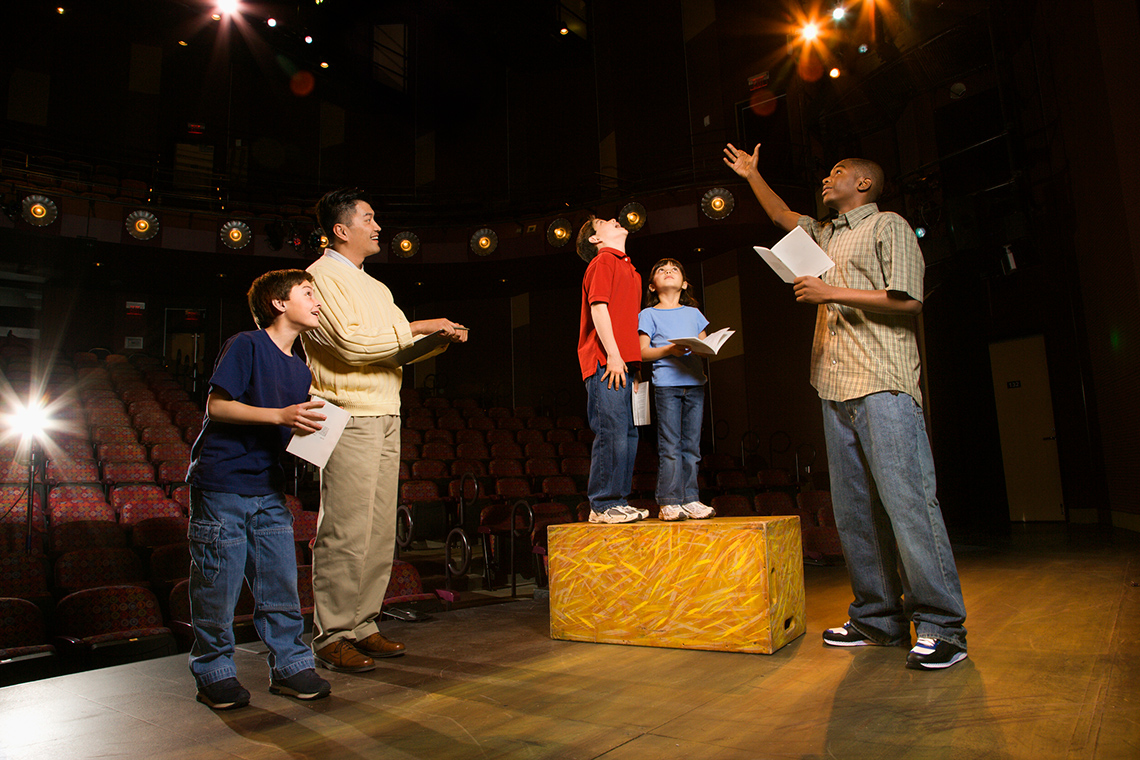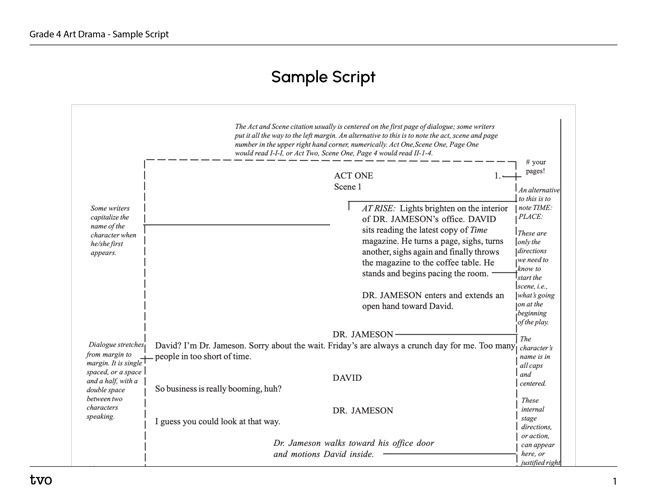Minds On
Warm up

Don’t forget to do your safety check!
Warm Up
Breathing activity
Find a comfortable position. Focus your attention on one part of the body at a time.
How does that part of your body feel? If possible, take a deep breath and allow your lungs to expand.
Focus your attention on one part of your body. Allow that part to relax before moving on to the next. As you scan through your body, keep breathing deeply.
Once you have completed the scan, take a moment to stretch.
Explore this audio recording entitled “Breathing Activity” to learn more about completing this warm up exercise.
Breathing Activity
Drama game
Imagine that you are a tree, beginning its life as a seed pod.
Explore the following audio and practise visualizing, moving, or just exploring the process of growing through the seasons in your own way.
Drama Game – Tree
Pause and Reflect
Growing through the seasons
Respond to the following questions about your experience. Consider adding your ideas to your drama portfolio, and share your thoughts with a partner, if possible.
- How did you feel when you grew out of the seed pod?
- What was it like when you first experienced the sun?
- How did it feel in role as the growing tree? Did you feel strong? Powerful? Vulnerable?
Record your thoughts in a notebook or another method of your choice.
Let’s get started

Brainstorm
Let’s brainstorm
- What might a playwright be responsible for in a drama production?
- What might a director be responsible for in a drama production?
- How might these two individuals work together?
Brainstorm and record your ideas in a notebook or another method of your choice.
Share your thoughts with a partner, if possible.
Action
What is a director?

A director is in charge of the creative vision of a production. Creative vision includes what the production with be and how it will be portrayed, how the actors should perform, and most importantly, what the audience should hopefully feel as they are enjoying the play. One way to think about creative vision is to imagine what the play would be like.
A director is in charge of making sure that everyone involved in the play (makeup artists, actors, lighting designers, costumers, and more) follow that vision.
A director figures out their creative vision even before rehearsals start. They think about the best way to tell a story.
What is a playwright?
A playwright is someone who creates and writes a play. The play can be dramatic or comedic or even a musical. It’s up to the playwright.
Most playwrights use a script format to write their plays.
Examine the following Sample Script to learn more about script formats.
How do they work together?

Playwrights and directors work together to create a drama production.
The director is responsible for deciding what they would like the audience to experience. They think about the character, setting, and story and give the playwright notes and ideas. Then, the playwright edits the play.
Let’s review the roles in a drama production. For each sentence, select the missing word.
After the playwright and director create a focus for the play, the director starts brainstorming ideas for the lights, costumes, and set. After coming up with ideas, they would work together with each member of the crew to bring all of the pieces of the play together.
Imagine it!
Time to become a director!
Explore the following script entitled “Belling the Cat” from Aesop’s Fables.
|
ACT ONE Scene 1 AT RISE: Lights brighten on the inside of a cozy mouse den with little chairs and stools. OLD MOUSE and YOUNG MOUSE were there as well as a smattering of other mice, all chattering over each other. An off-stage NARRATOR is also there. OLD MOUSE: Order! Order! We have come together today to figure out how to protect ourselves from …The Cat! All the mice start to boo. OLD MOUSE: We must find some way to know when she is coming, so we will have time to run away. NARRATOR: The mice sat and thought about it. Many plans were discussed but none of them was thought good enough. Something had to be done since the mice lived in constant fear of her claws and they barely left their dens during the day or at night. OLD MOUSE: That’s it? No one has any other plans? YOUNG MOUSE: Excuse me? Excuse me? OLD MOUSE: Yes, Young Mouse. Do you have a plan? YOUNG MOUSE: Yes I do. I have a plan that seems very simple but I know it will be successful. All we have to do is hang a bell around the Cat’s neck. When we hear the bell ringing, we will know immediately that our enemy is coming. NARRATOR: All of the mice were surprised that they had not thought of such a plan before. But while the crowd of mice were rejoicing over their good fortune, Old Mouse had a concerned look on their face. OLD MOUSE: (shouting) Attention! Attention! We have a problem. The room went silent. OLD MOUSE: I will say that the plan of Young Mouse is very good. But let me ask the question: Who will put a bell on the Cat? NARRATOR: The room was filled with disappointing sighs. After all, it is one thing to say that something should be done, but quite a different matter to do it. |
Press the ‘Activity’ button to access "Belling the Cat".
If you were directing this play, how would you do it?
Record your ideas in a notebook or another method of your choice.
Press ‘Hint’ to access a few ideas.
- I would do a big stage production with lots of mice, music, and sound effects.
- I would do a small production with only a few mice and a simple backdrop.
- I wouldn’t use any sound effects, only props.
- I would stage it as a puppet show.
Go!
Becoming a director

Imagine you are the director of a drama production of “Belling the Cat.” You may also choose another fable or story.
Things to think about:
- How many actors do you need?
- What is the setting?
- Would you use music or sound effects? If so, what kinds and why?
- Where would the actors stand on stage? Would they move around a lot or stay still?
- What costumes and/or props might you need?
- How would you make your production unique or special?
Complete the Director’s Planning Chart in your notebook or using the following fillable and printable document. If you would like, you can use speech-to-text or audio recording tools to record your thoughts. Consider adding your work to your drama portfolio.
|
How many actors I need for my play: |
||||
|
Description of the scenery: |
||||
|
Music/sound effects I will be using: |
||||
|
Sketch of costumes: |
||||
|
How I would make my production unique: (Blank) (Blank) (Blank) (Blank) |
||||
|
Use the following storyboard to show where the actors would be standing for each part of the story. |
Press the ‘Activity’ button to access Director’s Planning Chart.
Consolidation
Putting it all together
Time to create!

Now that you’ve planned out your script for your directing debut, it’s time to put your ideas into practice.
Create a presentation
Create a presentation or an audio recording describing your creative vision for your play.
Your presentation should include:
Consider adding your work to your drama portfolio. If possible, present your idea to a partner.
Portfolio
Review your learning
Reflect on the following questions and record your thoughts using a method of your choice.
Consider adding your ideas to your drama portfolio.
- What would the next step be for a director after creating their plan?
- Who are the members of the crew that they might start working with next?
Reflection
As you read through these descriptions, which sentence best describes how you are feeling about your understanding of this learning activity? Press the button that is beside this sentence.
I feel…
Now, record your ideas using a voice recorder, speech-to-text, or writing tool.
